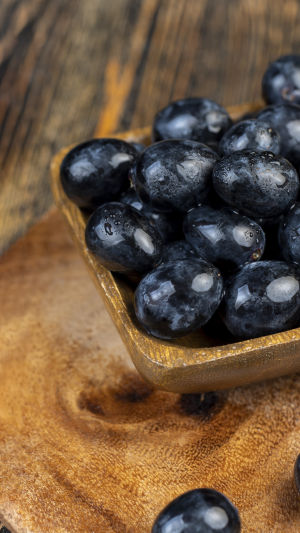Now is the fruit season, and the abundance of fresh fruits can be overwhelming. Among these, grapes stand out as a favorite for many, especially during late summer and early autumn.
Known for their juicy taste, rich nutrition, and various health benefits, grapes are often regarded as the "Queen of Fruits." Let's delve deeper into what makes this fruit so special and explore whether grape skins are indeed more nutritious than the pulp.
Grapes are packed with nutrients that make them a valuable addition to any diet. They are abundant in vitamins, minerals, and antioxidants that enhance overall health. The skin of the grape, in particular, has garnered attention for its concentration of beneficial compounds, including polyphenols, dietary fiber, and essential vitamins and minerals.
<h3>Nutrients in Grape Skins</h3>
Grape skins are a significant source of polyphenols, such as resveratrol, flavonoids, and ellagic acid. These compounds are renowned for their potent antioxidant properties. Antioxidants help neutralize free radicals and reduce oxidative stress, which can prevent various chronic diseases, including cardiovascular disease, diabetes, and certain cancers.
Additionally, the dietary fiber found in grape skins promotes digestive health and helps maintain a healthy balance of gut flora. Essential vitamins and minerals, such as vitamin C, potassium, and magnesium, are also present in grape skins, supporting various physiological functions.
<h3>The Challenges of Consuming Grape Skins</h3>
Despite the nutritional benefits, the consumption of grape skins poses several challenges:
<b>1. Texture and Taste:</b> Grape skins are thicker and tougher than the pulp, often possessing a bitter taste. This texture and flavor can be unappealing to many, leading them to peel the grapes before eating. Consequently, the intake of grape skins is typically minimal.
<b>2. Nutrient Concentration:</b> While grape skins contain high concentrations of beneficial compounds like resveratrol, the overall quantity of these nutrients within the skin is relatively low. Studies suggest that achieving significant health benefits from resveratrol would require the consumption of an impractically large amount of grape skins daily.
<b>3. Bioavailability:</b> The human body's ability to absorb and utilize the nutrients in grape skins is limited. For instance, although polyphenols have excellent antioxidant capabilities, their bioavailability is low. After ingestion, only a small portion is effectively absorbed, with most being metabolized or excreted.
<b>4. Pesticide Residues:</b> Grapes are often treated with pesticides, and residues can remain on the skin. Even organic grapes can have trace amounts of pesticides. Consuming grape skins without thorough washing may increase the risk of ingesting harmful substances.
<h3>Maximizing the Benefits of Grapes</h3>
Given these challenges, the direct consumption of grape skins may not be the most effective way to obtain their nutrients. However, grapes as a whole, including the pulp and seeds, offer a myriad of health benefits. To maximize the benefits of grapes:
<b>1. Eat Whole Grapes:</b> Consuming whole grapes, including skins and seeds when possible, ensures a higher intake of nutrients. The seeds, like the skins, contain beneficial compounds, including healthy fats and additional antioxidants.
<b>2. Diversify Your Diet:</b> Incorporate a variety of fruits and vegetables into your diet. This diversification ensures a broader spectrum of nutrients and maximizes health benefits. Relying solely on one type of food or part of a food, like grape skins, is not as effective as a balanced diet.
<b>3. Consider Supplements:</b> For those seeking specific health benefits from compounds like resveratrol, supplements might be an alternative. However, it is essential to consult with a healthcare provider before starting any supplement regimen.
While grape skins are indeed rich in beneficial nutrients, the practical benefits of consuming them directly are limited due to their texture, nutrient concentration, bioavailability, and potential pesticide residues.
Instead of focusing solely on grape skins, a more effective approach is to include whole grapes in your diet, along with a variety of other fruits and vegetables. This ensures a comprehensive intake of essential nutrients, promoting overall health and well-being.





